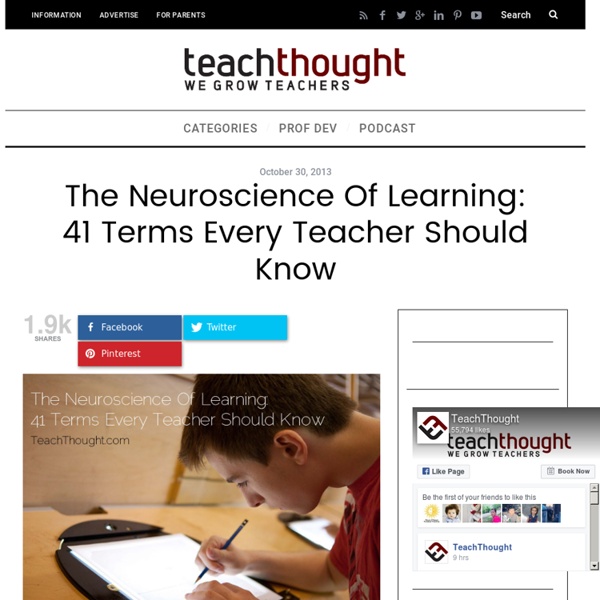The Neuroscience Of Learning: 41 Terms Every Teacher Should Know

Neuroscience at work: new CIPD study | Ruth Holmes | Re:locate magazine
A new study from the Chartered Institute of Personnel and Development (CIPD) reveals the latest insights into the role of neuroscience in learning and development. The professional body for HR and people development’s publication Neuroscience in action: Applying insight to L&D practice describes how high-profile organisations including Volvo, Fitness First, BT and Imperial College Healthcare NHS Trust are using neuroscience and an understanding of how the brain works to enhance learner engagement and performance. As well as offering L&D and HR practitioners an overview of what neuroscience is, the CIPD’s new report includes practical advice on “how to implement effective neuroscience techniques with minimal investment.” Representatives from two of the companies whose experiences formed part of the study will be taking to the stage on Thursday at the CIPD’s annual conference.
CIPD 2014: Applying neuroscience to learning and development | Mark Johnson | Re:locate magazine
On stage were Karen Bailey, head of competence development at Volvo, Jan Hills, partner and founder at Head Heart + Brain and Beverley Aylott, head of leadership at Imperial College Healthcare NHS Trust, with Ruth Stuart, research adviser for Learning and Development at the CIPD hosting the event. Much of the discussion revolved around how this relatively young discipline can be applied to the needs of organisations. Addressing the broader strokes of how neuroscience can help an organisation, Hill said that it provides insight into how people learn and how behaviour can be changed. "Neuroscience tells us that people learn the most when they have the insight themselves. So we've made a big study into how you make that insight part of your learning programmes, rather than telling people what they need to change or what they should do," she said. Neuroscience is key not just in the content trainers deliver, but in designing the entire process.
Neuroscience Mythology Hampers Teaching
By Rick Nauert PhD Senior News Editor Reviewed by John M. Grohol, Psy.D. on October 17, 2014 Despite efforts to used fact-based approaches in education, teachers and the public may be incorrect on core assumptions that influence the way educational material is presented. In a new study, researchers from the University of Bristol wanted to show that educators often fail to heed their own advice as they make assumptions and use methods that are not evidence-based. The neuroscientists believe teachers innocently adopt or use strategies that they believe are based on emerging neuroscience findings. The report blames wishfulness, anxiety, and a bias towards simple explanations as typical factors that distort neuroscientific fact into neuromyth. Teachers in the U.K., Holland, Turkey, Greece, and China were presented with seven statements and were asked if they were true. The statements were: All of the statements represent so-called “neuromyths,” said the study authors. Specific findings included:
Related:
Related:



